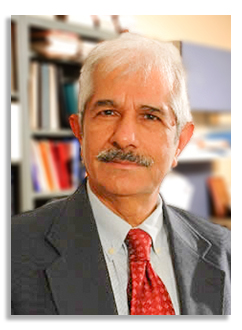
Abstract
At the end of last century, development of 25 % efficient silicon solar cells by Dr. Green of University of New South Wales in 1999 gave birth to the PV market dominated by subsidiaries first introduced in Japan, followed by Germany and then by the rest of the world. The subsidized market of PV started to grow, but financial crisis of 2007-2008 lead to the collapse of PV market. However, due to inherent virtues of PV the market started to grow again in 2010 and by the first quarter of 2022 we have more than one Terawatt of PV installed all over the world. Based on abundance, free fuel, minimum amount of greenhouse gases emissions, and minimum use of water in power generation, highest safety, access to all, and ultra-low cost, photovoltaics (PV) has the potential of generating sustainable, green and equitable electric power for all applications.
In places where solar intensity is low (e.g. Scandinavian countries) wind energy can supplement solar energy. Due to advancements in technology and ultra-large-scale manufacturing, lithium-ion batteries are emerging as a cost-effective solution of electric power storage due to its constantly reducing cost. Due to fundamentally low energy conversion energy, efficiency of fuel cells (~ 60 % vs. lithium ton battery of 95 %); green hydrogen is not commercially available at low-cost. Free fuel solar generated green electric power combined with lithium-ion batteries for storing electric power has the potential to electrify almost everything and transform the global energy sector. At utility scale, the cost of green energy generated by photovoltaics and batteries is cheaper than fossil fuel. Green sustainable electrical power generated by PV will play the same role in the field of energy as that has been played by CMOS in low-power electronics.
In addition to the electrification of transportation, and electrified heat, artificial intelligence has provided another additional area of high demand of green electricity. Globally, energy loss is the single biggest component of today’s electrical infrastructure. Historically, since the “war-of-currents,” AC power dominated the electricity grid due to the invention of transformers. Solar cells generate DC power. Batteries store DC power and fuel cells also generate DC power. Today, most loads operate on DC power converted internally from AC to DC within the load. The remaining inductive loads can be served by connecting an on-spot inverter to a local DC bus. Thus, from an energy efficiency (directly related to the cost of electricity that the consumer pays) point of view, the current AC grids are highly inefficient, and a large amount of energy is wasted.
Today, the advent of power electronics has tilted the scales in favor of DC networks with integration of renewables, energy storage, and modern high efficiency loads based on power electronics. Theoretical and experimental work has shown the superiority of DC networks over AC networks. In this talk, I will provide a pathway that can be implemented to phase out AC infrastructure, and eventually, we will have DC power-based electricity infrastructure. The replacement of incandescent light bulbs by LEDs is an example of enabling smooth phasing out older AC infrastructure.
Click here to see all available video seminars.
Click here to go to the SPREE HOMEPAGE.
Brief Bio
Rajendra Singh is Houser Banks Distinguish professor in the Holcombe Department of Electrical and Computer Engineering and Automotive Engineering at Clemson University (CU). He is also the Executive Director of Electrification of Transportation minority program at CU. During the energy crisis of 1973, he decided to do Ph.D. dissertation in the area of Silicon Solar Cells. In the last 50 years, he has contributed and witnessed the growth of photovoltaic and semiconductor industries. With proven success in operations, project/program leadership, R&D, product/process commercialization, and start-ups, Dr. Singh is a leading technologist with the focused goal of mitigation of climate related challenges by providing green electric power for various sectors including transportation, manufacturing and desalination.
He is author or co-author of over 500 publications in various journals and conference proceedings. He is editor or coeditor of more than fifteen conference proceedings. He has presented over 60 keynote addresses and invited talks in various national and international conferences. Dr. Singh holds six patents. Technology developed in his lab has been licensed to industry for commercialization. He is fellow of IEEE, SPIE, ASM and AAAS. Dr. Singh has received a number of national and international awards. In 2014, he was honored by US President Barack Obama as a White House “Champion of Change for Solar Deployment” for his leadership in advancing solar energy with photovoltaics technology. In 2019, he received Hind Rattan (Jewel of India) Award presented by Bibek Debroy, chairman of the Economic Advisory Council to Prime Minister Narendra Modi.”
